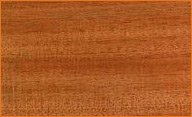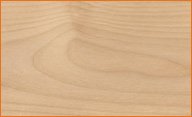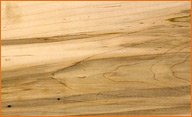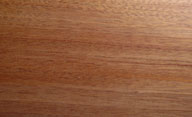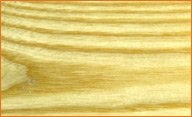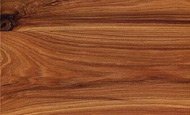| Lumber Glossary Term |
Definition |
| A-Frame |
Two wooden or metal uprights mounted in the shape of the letter “A” to support lead blocks at the upper end. |
| Above-ground Biomass |
The above ground portion of a tree, excluding the root system. |
| Abney Level |
Hand-held clinometers that are used to measure slope in percent. |
| Abrasives |
A material that is used to shape or finish a work piece through rubbing which leads to the work piece being worn away. |
| Absolute Humidity |
The weight of water vapor per unit of air; usually expressed as grains/cu. ft. |
| Absorption |
The gain of free water by the cell cavities. |
| Access |
The means of gaining entry to timber on a tract or logging chance. |
| Accumulating Sheer |
Shearhead on a feller-buncher that is capable of accumulating and holding two or more cut stems. |
| Across The Grain |
Generally perpendicular to the grain direction. |
| Actual Dimensions |
The exact measurements of a piece of lumber. (i.e. – a 2x4 (nominal dimensions) is actually 1 ½ inches thick by 3 ½ inches wide.) |
| AD (Air-Dried) |
Lumber which has been air dried. |
| ADF |
A term used to define a condition upon which payment of an invoice may be made. |
| ADI |
After date of Invoice. |
| Adherent |
A material that is held to another material by an adhesive. |
| Adhesion |
A substance in which two surfaces are held together by
inter-facial forces, which may consist of valence forces or interlocking
action or both. |
| Adhesive |
A substance capable of bonding material together by surface attachment.
- Assembly Adhesive – An adhesive that can be used for bonding parts
together, such as in the manufacture of a boat, airplane, and furniture.
- Cold-Setting Adhesive – An adhesive that sets at a temperature below 68 degrees Fahrenheit (20 degrees Celsius)
- Construction Adhesive – Any adhesive used to assemble primary
building materials into components during building construction; most
commonly applied to elastomeric-based adhesives.
- Contract Adhesive – An adhesive that is apparently dry to the touch
and that will adhere to itself instantaneously upon contact; also
called contact bond adhesive.
- Gap-Filling Adhesive – An adhesive capable of forming and maintaining a bond between surfaces that are not close fitting.
- Hot-Melt Adhesive – An adhesive that is applied in a molten state and forms a bond upon cooling to a solid state.
- Hot-Setting Adhesive – An adhesive that requires a temperature at or above 212 degrees F.
- Room Temperature Curing Adhesive – An adhesive that sets in the
temperature range of 68 to 86 degrees F, in accordance with the limits
for Standard Room Temperature specified in the Standard Methods of
Conditioning Plastics and Electrical Insulting Materials for Testing.
- Solvent Adhesive – An adhesive having a volatile organic liquid as a vehicle.
- Structural Adhesive – A bonding agent used for transferring
required loads between adherents exposed to service environments typical
for the structure involved.
|
| Admiralty Shackle |
A heavy shackle at the tail end of the tree that connects the skyline to the sub line (guy line extension). |
| Adult Wood |
Wood produced after cambial cells have attained maximum dimensions. |
| Advanced Decay |
An older stage of decay readily recognized as wood
that has become punky, soft, spongy, stringy, rinkshaked, pitted, or
crumbly. |
| Adverse Grade |
In highway transport, uphill haul that requires
trucks to use lower gears; a gradient that slopes upward in the
direction of loaded log truck travel. |
| Aerial Logging |
Yarding system employing aerial lift of logs, such as balloons or helicopters. |
| Afforestation |
Establishment of forest crops through artificial
methods, such as planting or sowing on land where trees have never
grown. |
| African Blackwood |
- Dark purple-brown with black streaks
- Usually straight grained
- Extremely fine and even texture
- Exceptionally heavy and dense
- Difficult to work with
- Pre-boring is required
- Used for woodwind instruments, ornamental work, carved figures, walking sticks, knife handles and inlay work
|
| African Mahogany |
- Heartwood varies from light to deep reddish-brown
- Straight to interlocked grain
- Moderately coarse textured
- Widely used for furniture and cabinet making, interior joinery, boat building and decorative work
|
| African Padauk |
- Vivid blood red heartwood to dark purple-brown
- Straight to interlocked grain
- Excellent strength properties
- Medium resistance to shock loads and stiffness
- Used for fancy turnery, tool and knife handles, paddles, oars, agricultural implements, and heavy-duty flooring
|
| African Walnut |
- Bronze-Orange heartwood
- Interlocked grain
- Fine texture
- Lustrous
- Medium crushing strength
- Low bending strength
- Resistance to shock loads
- Very low stiffness
- Moderate bending classification
- Works well with hand and machine tools
- Tends to split when nailed
- Used for furniture, cabinets, paneling, gun stocks, domestic flooring, and billiard tables.
|
| After Date of Invoice |
A term used to define a condition of sale; cash
discounts are often allowed for payment within a specified period "after
date of invoice." |
| After Deducting Freight |
A term used to define a condition upon with payment of an invoice may be made. |
| Against The Grain |
A reference to the cutting direction; as in
planing a board surface, such that splitting ahead of the cutter follows
the grain direction downward into the wood below the projected cutting
surface. Also, generally perpendicular to the grain direction, across
the grain. |
| Age |
Mean age of the trees comprising a crop, forest, or stand. In
forests, the mean age of dominant (and sometimes co-dominant) trees is
taken. The plantation age is generally taken from the year the
plantation was begun without adding the age of the nursery stock. |
| Age Class |
One of the intervals, commonly 10 or 20 years, into which
the age range of tree crops is divided for classification or use. Also
pertains to the trees included in such an interval. (i.e. trees ranging
in age from 21 to 40 years fall into a 30-year ago class; 30 designates
the midpoint of the 20-year interval from 21 to 40 years.) |
| Air Cleaner (Air Polisher) |
A machine designed to filter fine dust
from the air in a workshop. A blower moves air past a series of filters
to capture the airborne dust. |
| Air Compressor |
A compressor that takes in air at atmospheric pressure and delivers it as a higher pressure. |
| Air-Dried Lumber |
Lumber that was dried, usually outside, to
equilibrium moisture content with the air it was exposed to. Any lumber
below 30% MC is classified as air dried. Construction grade is around
19% MC. Moisture content of air-dried wood fiber depends on length of
drying period, relative humidity, and temperature. It’s also referred to
as air seasoned. |
| Air Hose |
A hose that carries air under pressure. |
| Alder |
- Dull reddish brown with darker lines
- Low bending classification
- Low bending strength
- Resistant to shock loads
- Very low stiffness
- Medium crushing strength
- Low cutting resistance
- Nails and screws satisfactorily
- Glues well
- Used for brooms, hat blocks, toys, wooden clog soles, veneers
|
| All-Aged |
Forest or stand containing trees of almost all age classes up to and including trees of harvestable age. |
| All Widths and Lengths |
A term used indicating that all widths and
lengths of a specified thickness of lumber may be included in a
shipment. |
| Allen Head |
A screw head with a recess requiring a hexagon shaped
key, used mainly on machinery. These may be in metric or SAE sizes. |
| Allowable Cut |
Volume of timber that may be harvested during a given period of time to maintain sustained production. |
| Allowable-Cut Effect (A.C.E) |
Allocation of anticipated future
forest timber yields to the present allowable cut; this is employed to
increase current harvest levels, especially when constrained by even
flow by spreading anticipated future growth over all the years in the
rotation. |
| Allowable Property |
The value of a property normally published for
design used. Allowable properties are identified with grade descriptions
and standards, reflect the orthotropic structure of wood, and
anticipate certain end uses. |
| Along the Grain |
Generally paralleled to the grain direction. |
| Alternate |
An alternating set of teeth on a saw blade with a left-right sequence. |
| Alternate Top Bevel with Raker (ATB/R) |
A design for a circular saw
blade where four alternately beveled teeth are followed by a raker tooth
to remove debris from the cut. |
| Ambrosia Maple |
- The ambrosia beetle causes the wormy pattern in this soft maple
- Beautiful brown and gray stripes with small worm holes
- Medium bending and crushing strength
- Used for furniture and flooring
|
| American Lumber Standard |
The American Softwood Lumber Standards
establishes standard sizes and requirements for the development and
coordination of lumber grades of various species, the assignment of
design values when called for, and the preparation of grading rules
applicable to each species. |
| American Tree Farm System (ATFS) |
A program of the American Forest
Foundations Center for Family Forests is the oldest of forest
certification programs and was established in 1941. The ATFS focuses its
program on private family forest landowners in the United States. |
| Anchor |
Piece of equipment that holds something in place.
i.e. – a clamp is a type of anchor. |
| Anchor Cable |
A line used to tie down a yarded to prevent tipping on heavy pull. |
| Anchor Log |
Concrete, metal or wooden bars buried in the earth to hold a guy rope. This is also called a deadman. |
| Andiroba |
- Light mahogany color to reddish-brown
- Straight grained, occasionally interlocked with ripple marks, producing Fiddleback figure.
- Medium bending and crushing strength
- Low stiffness
- Sanding is required for smoother finish
- Pre-boring is necessary for nailing
- Used for boat and ship decking, light construction, flooring and rafters, furniture, and turnery.
|
| Aniegre |
- Heartwood is cream colored to tan with a pinkish tinge
- Usually straight grained, sometimes wavy
- Medium to coarse texture
- Medium bending strength
- Used for furniture, cabinet wood, general utility and interior purposes
|
| Anisotropic |
Shows different properties when measured along a different axes. |
| Annual Allowable Harvest |
Quantity of timber scheduled to be removed from a particular management unit in one year. |
| Annual Growth Rings |
The layer of growth that a tree puts on in one
year. The annual growth rings can be seen in the end grain of lumber. |
| Applied Carving |
A background which is worked separately and then applied, rather than being worked in place. |
| Apron |
A frame around the base of a table to which the top and legs are fastened. |
| Arbor |
A shaft, driven by the tools motor that turns blades or other cutting tools. |
| Arch |
Supporting device mounted on or towed behind or a skidding
vehicle. This is used to lift one end of a log(s) to reduce sliding
resistance and/or transfer the weight. |
| Area Regulation |
Method of controlling the annual or periodic
acreage harvested from a forest, despite fluctuations in fiber-yield
volumes. This leads to a managed forest. |
| Area Salvage |
Timber sales in which the USDA Forest Service sells
dead timber within a given area. Usually covers more than an operating
season and requires the operator to return annually to remove any dead
timber present. |
| Ash |
- Grey-brown heartwood
- Generally straight grained and coarse
- Even textured
- Variable bending properties
- Good strength, elasticity, toughness, stiffness, and hardness qualities.
- Excellent shock resistance
- Pre-boring is necessary when nailing
- Used for all types of sport equipment, bats, cues, oars, handles, church pews, cabinets, and decorative veneers.
|
| Assembly Time |
The time elapsed between spreading adhesive on
surfaces to be joined and application of pressure to the joint. Open
assembly time is from the beginning of spreading to joint closure.
Closed assembly time is from joint closure to application of full
pressure. |
| Attached Deck |
A deck with one or more sides supported by a ledger and attached to a house. |
| Association of American Railroads (AAR) |
A trade association based in Washington, D.C. representing the nations Class I Railroads. The AAR represents the industry in the broad fields of Law, Public Affairs, Legislation, Economics and Finance, Research and Testing, Transportation, Safety, Engineering, Freight Claim and Prevention and Car service. |
| Auger |
Various hand tools, typically that have a threaded shank and cross handle, used for boring holes in ice or wood. |
| Australian Cypress |
- Mostly golden colored
- Closed and tight grain
- Very durable
- Used for flooring, feature finishes, and cabinets
|
| Awl |
A pointed instrument that looks like an ice pick, useful for marking positions when laying out a project. |
| AWLS |
A term used indicating that all widths and lengths of a specified thickness of lumber may be included in a shipment. |
| AW&L |
A term used indicating that "all widths and lengths" of a specified thickness of lumber may be included in a shipment. |


